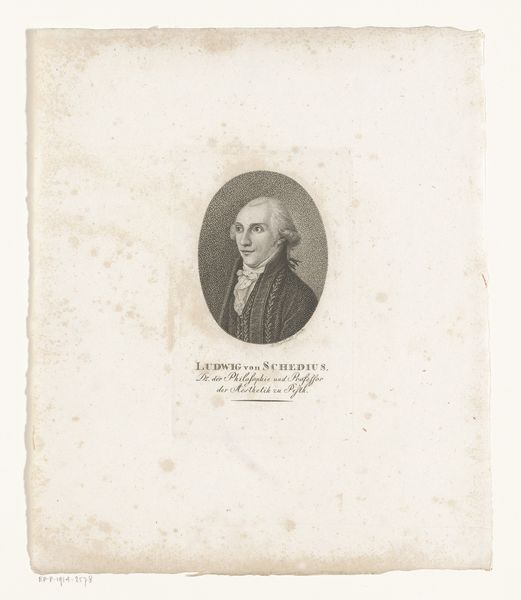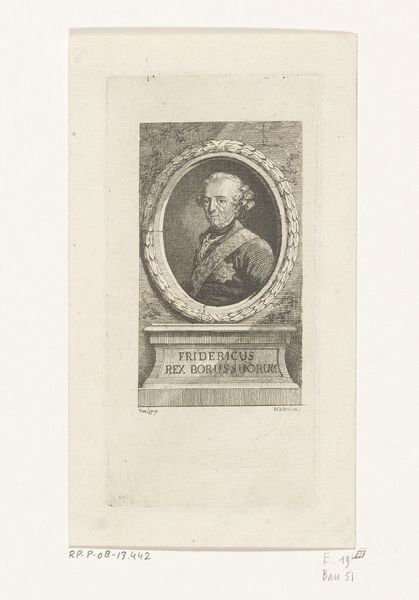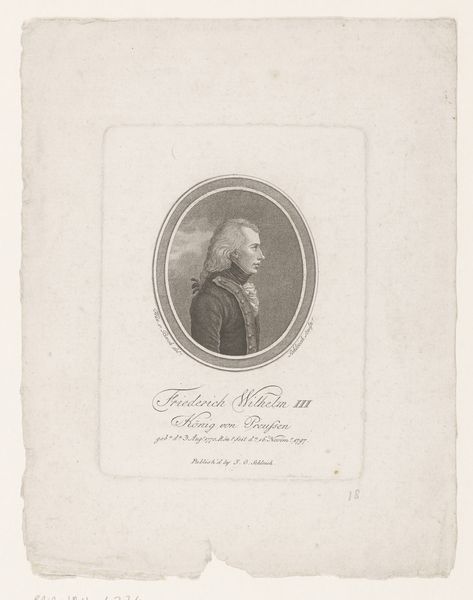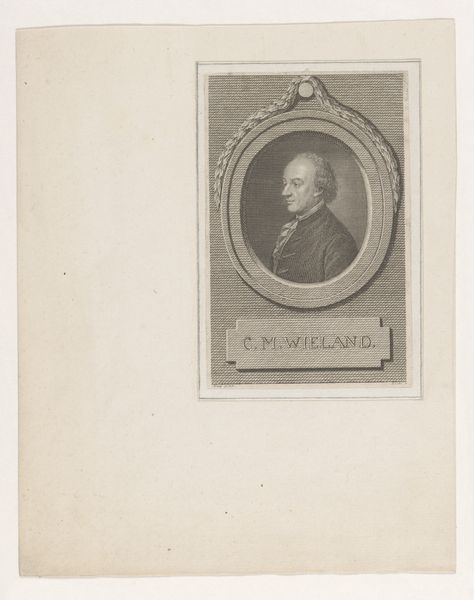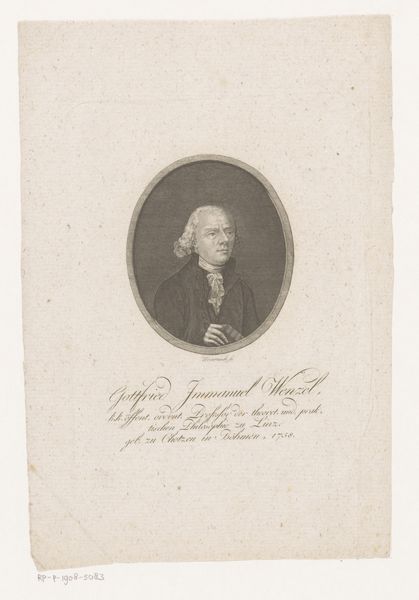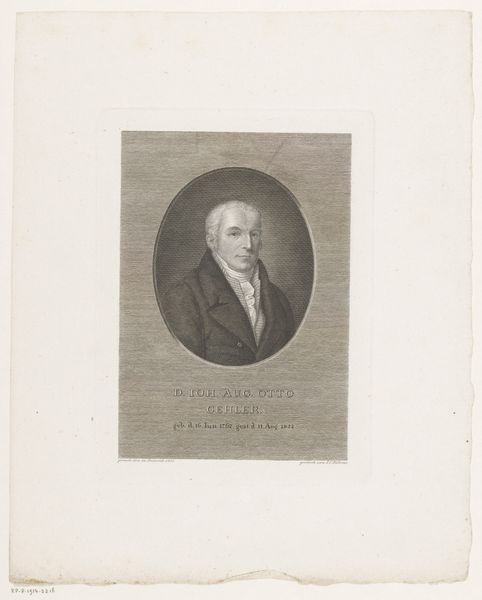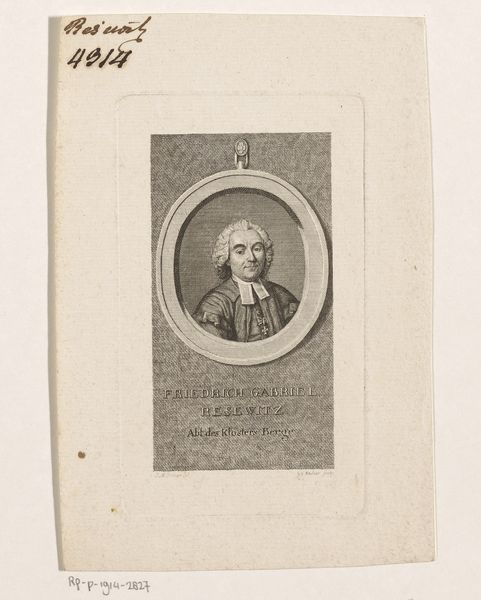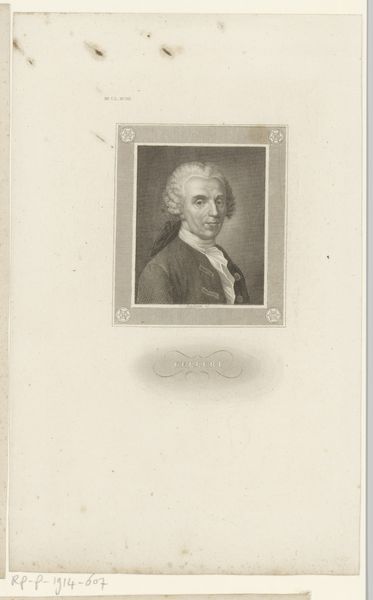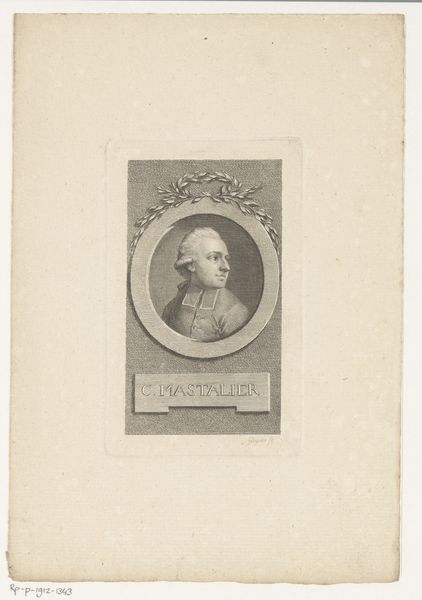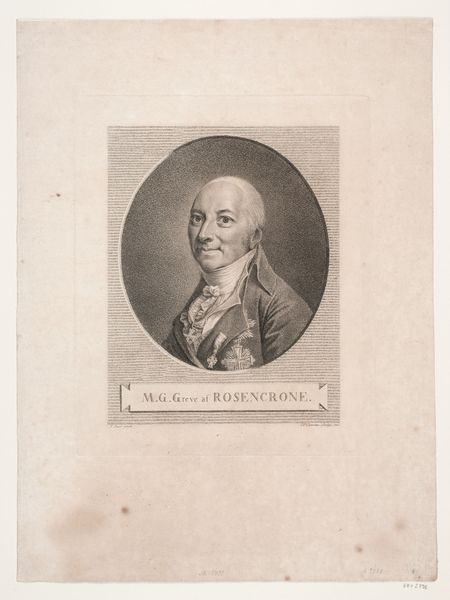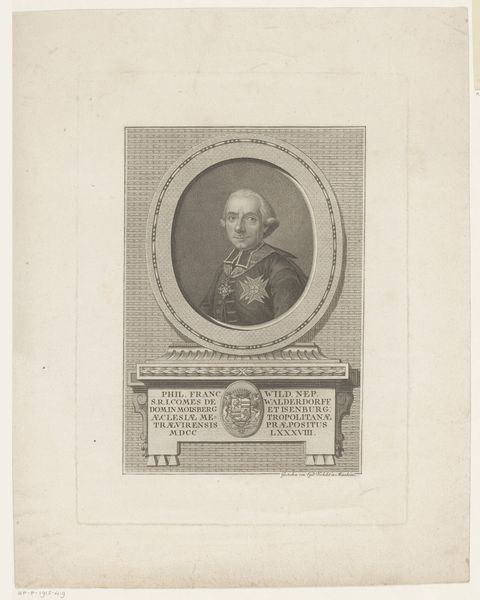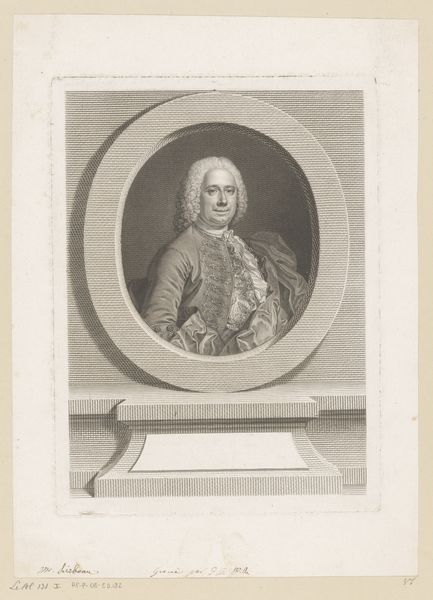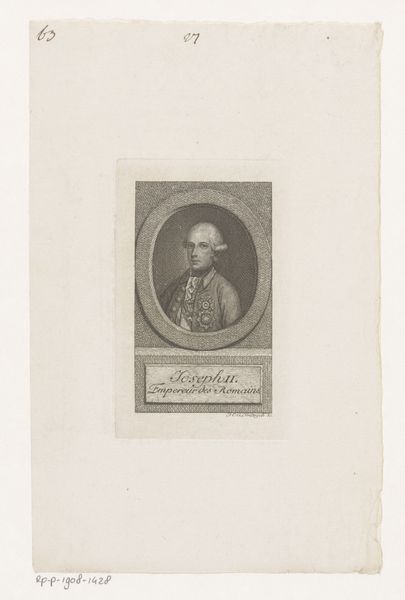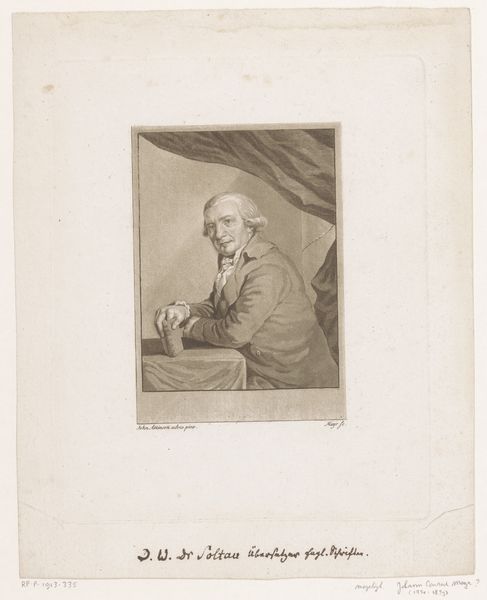
print, etching, paper, engraving
#
portrait
#
neoclacissism
#
aged paper
#
toned paper
#
muted colour palette
# print
#
etching
#
old engraving style
#
paper
#
line
#
history-painting
#
engraving
Dimensions: height 162 mm, width 95 mm
Copyright: Rijks Museum: Open Domain
Curator: Looking at this somber piece, I notice immediately the density of the lines—they give it a tactile quality, almost like I could feel the texture of the man's coat just by looking at it. Editor: That’s an interesting observation. This is a 1797 engraving entitled “Portret van Johann Samuel Fest,” now held in the Rijksmuseum’s collection. It depicts, as the title suggests, Johann Samuel Fest, a man of the era, in typical Neoclassical fashion. Curator: The oval frame containing the portrait… the garland draped above it… It suggests celebration, honour, and yet the subject's expression is quite serious, contained. Does that strike you as a purposeful juxtaposition? Editor: Absolutely. Consider that engravings, particularly portraits, were powerful tools for constructing public image and memory. The very choice to depict Fest in a print suggests he was someone of considerable social standing worthy of remembrance and emulation. His serious mien might communicate wisdom, steadfastness, and the virtues valued by the elite. Curator: And the rather formal inscription at the base, resembling a plaque… It anchors him firmly in time and reminds us this image intended to last, to commemorate beyond a single generation. Did the symbols used at that time denote more information about Fest’s achievements, profession or social class? Editor: More than likely. These images were very intentionally coded. Every element from the style of dress, the pose, and even the framing devices around the portrait would communicate status and perhaps allegiances. And as you mentioned before about commemoration: portraits like this reinforced societal hierarchies through controlled representation. Curator: So, we see how portraiture can be about individual likeness but also serve purposes to convey broader socio-political messages about power. Editor: Precisely. And looking at the print now, understanding the potential for controlled image-making, one can ask, What is *not* shown? What aspects of Fest’s life, or even his character, have been consciously omitted from this presentation?
Comments
No comments
Be the first to comment and join the conversation on the ultimate creative platform.
